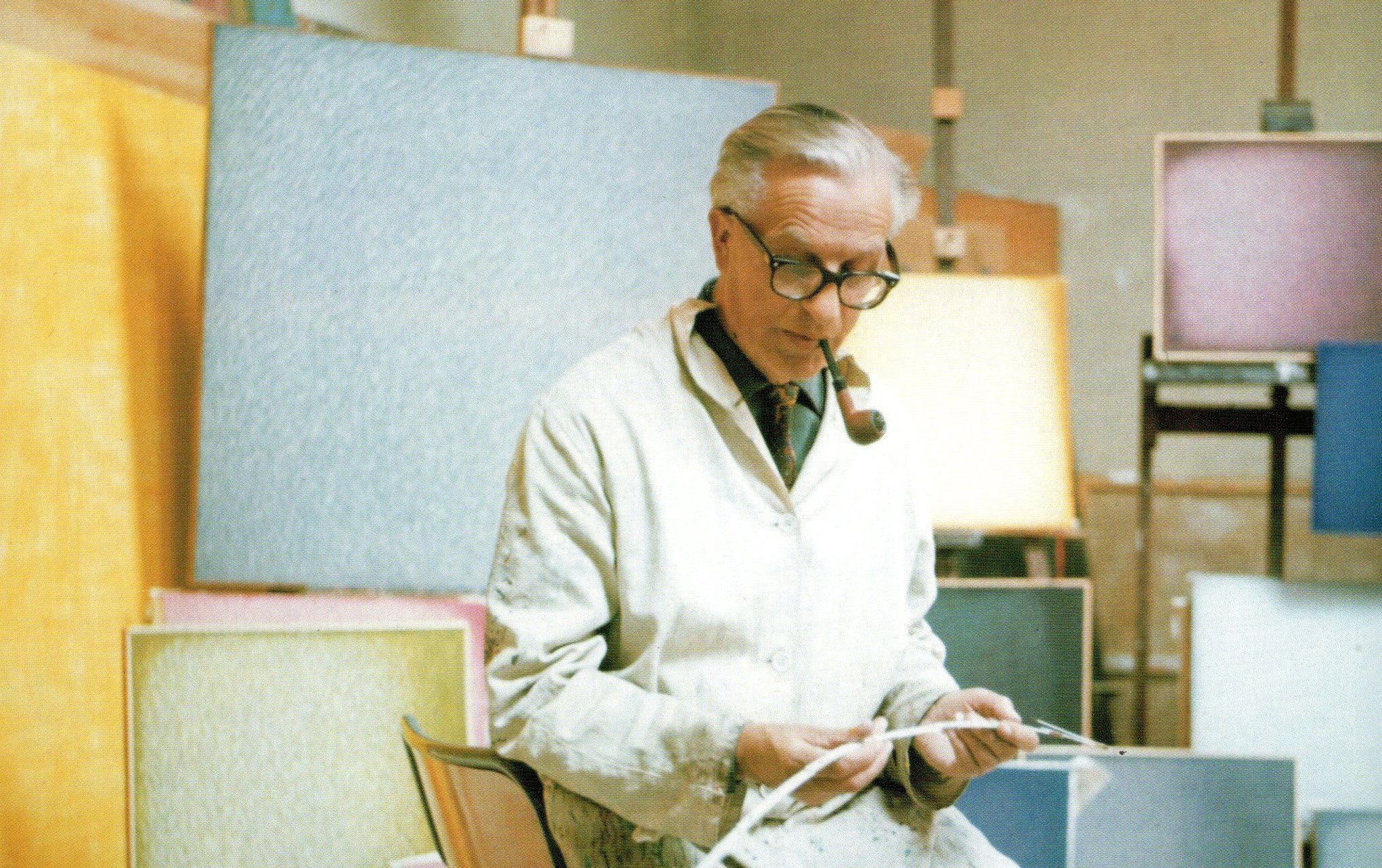The surface of the canvas is like a skin that I scratch to uncover the secrets lying underneath, creating a dialogue between chance and intention.
— Mario Deluigi
The surface of the canvas is like a skin that I scratch to uncover the secrets lying underneath, creating a dialogue between chance and intention.
— Mario Deluigi
Biography
Mario Deluigi (1901–1978) was an influential Italian artist and innovator in the field of abstract art, known for his experimental techniques and contributions to the Spatialist movement. Born in Treviso as the youngest child, along with his twin sister Maria, of eleven siblings, Deluigi showed an early aptitude for art. After completing his studies at the artistic high school, he enrolled at the Academy of Fine Arts in Venice, where he studied painting under Ettore Tito and learned from the lectures of Virgilio Guidi, both of whom significantly influenced his artistic development.
Deluigi’s exhibition career began in 1928 when he participated in the XIX Group Exhibition of Opera Bevilacqua La Masa. By 1930, his works were featured at the prestigious Venice Biennale, marking the beginning of his recognition in the art world. From 1942 to 1944, he worked as an assistant to the sculptor Arturo Martini at the Academy of Fine Arts in Venice, further honing his craft and artistic philosophy.
In the early 1950s, Deluigi transitioned increasingly toward abstraction, aligning himself with the Spatialist movement, which sought to explore the dynamic relationship between art, space, and technology. He signed the Manifesto dell’Arte Spaziale (Manifesto of Spatial Art) in 1951 and the Manifesto del Movimento Spaziale per la Televisione (Manifesto of the Spatial Movement for Television) in 1952, positioning himself at the forefront of avant-garde artistic discourse.
A hallmark of Deluigi’s artistic innovation was his pioneering use of grattage, a technique involving scraping layers of paint to create textured, luminous effects. This approach reached a mature form in his series Motivi sui Vuoti, exhibited at the 1954 Venice Biennale, which showcased his exploration of light, voids, and spatial dynamics. His work from this period underscored his ability to transcend traditional methods, creating compositions that were simultaneously tactile and ethereal.
Throughout the 1960s and 1970s, Deluigi continued to refine his artistic investigations into the interplay of light, space, and abstraction. He participated in numerous national and international exhibitions, earning widespread recognition for his contributions to modern art.
Mario Deluigi passed away in Venice in 1978.

Mario Deluigi in his studio © Archivio Mario Deluigi
